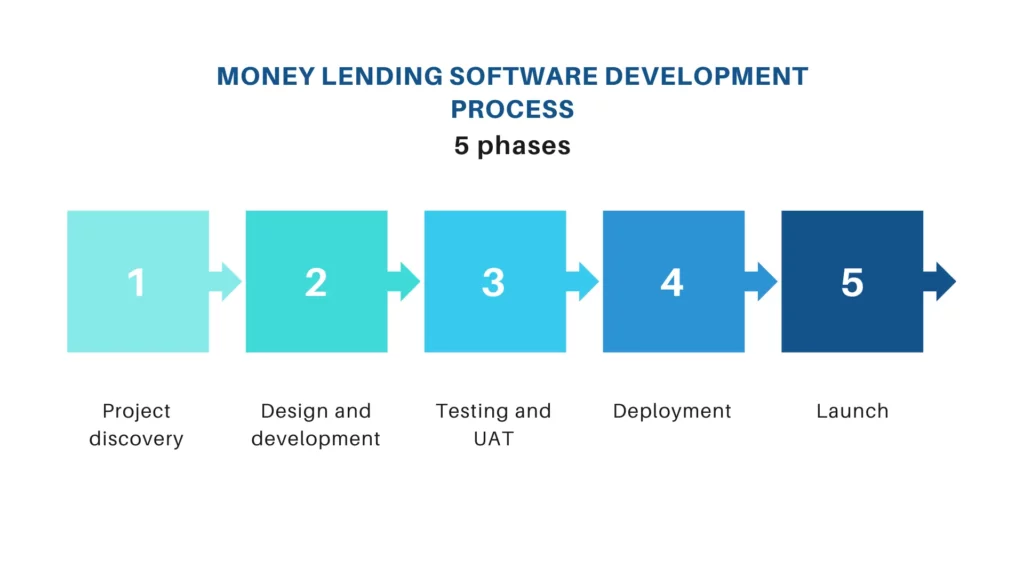Software development for the banking sector: Loan automation and its capabilities


According to our customers’ experience, automation in banking leads to cutting human errors by more than 90%. The development process of the core banking app usually takes 3-4 months. Is it really worth time and investments in the long run? An immediate yes, and here’s why.

Project discovery
Robust loan management software contains loan decision engines, lending origination and onboarding, loan calculation modules, etc. It is better to start a development process by exploring your landing lifecycle and conducting a comprehensive business analysis. Based on your preferences and initial requirements, you’ll draw your roadmap. PNN analysts will thoroughly explore how to check credit history, rate and score, collect payments, report loans, and so on.
Design and development
After attaining the same opinion on specifications, you can start an actual development process, following the work breakdown structure and a road map. Providing clients with reports on iterations being accomplished and pre-defined metrics for progress evaluation is crucial. Ensure your development cycle implies a robust change management procedure. When developers make corrections, they are to integrate changes into a detailed impact analysis.
Testing and UAT
From the first iterations, it’s critical to perform testing, including on-time bug detection, fixing, and user acceptance. The latter is essential for estimating customer satisfaction levels before deployment and release. However, to proceed with that efficiently, you need to create a detailed testing strategy beforehand – it should contain an accurate description of the project scope, requirements and workload complexity.
Deployment and launch
At this stage, a developer scrutinizes IT infrastructure to detect any gaps, shortcomings or technical issues. Thus, thanks to the audit, the team comes up with a list of recommendations for modifying existing infrastructure to prepare for deployment. The successful launch also implies preparing user documentation agreed upon in the project’s first phase.

Identifying and tracing fraud actions promptly – that’s where data theft prevention starts. How do we establish a complex and consistent fraud strategy to get a 360-degree view of each business process? Let us dwell on that in more detail.
Providing employees with lecturers
During your training, it is critical to imitate possible hacker attacks to teach staff how to define shortcomings and deal with potential hazards. Another area of studying implies how to decrease human errors that may result in data breaches or cause connectivity interruptions.
Emphasizing the importance of ID verification
What are the stages that help generate the online lending workflow? First and foremost, acquiring the information regarding lead, history or credit score, and checking the blocklists of banks and lenders. For identifying a person, you may utilize facial match (when technology checks if face biometrics aligns with photo on ID/passport/driver’s license). ID verification enables banks and financial institutions to prioritize borrowers and not waste time serving non-performing ones. It is also noteworthy to inform clients on which data they can request and which they cannot due to security conditions.
Modern fraud analytics
Select an appropriate software capable of anticipating fraudulent activities and real-time spotting suspicious behaviours. Your system should uncover bots and malware and verify proxies immediately. And please keep each tool of your platform under dynamic control – for instance, if you have decided to purchase a payment gateway from providers, closely analyze your vendor’s security terms and conditions.

Banking loan software solutions
Among the most topical challenges in loan management are weak fraud monitoring, gaps in customer support, long loan decision processing, and legacy interfaces. Custom development services by PNN Soft provide our clients with detailed business analysis and convenient UI/UX (as we aim here to remove all distractions and let customers navigate on a platform better to complete multiple tasks and legacy system modernization).
Fintech money lending software
The fintech industry directly impacts the global IT landscape, providing clients with an innovative super-intelligent solution for money transferring, lending, etc. PNN Soft team has extensive experience integrating blockchain, machine learning, and artificial intelligence solutions. These technologies can be applied to create cutting-edge lending management services with secure data processing, high operational efficiency, regulatory compliance and fast loan lifecycles.
Loan module in core banking
Our experts are also skilled at integrating, customizing and modernizing lending platforms for core banking solutions. We constantly analyze new policies, standards and regulations for all kinds of banks to evaluate and modernize debt collection systems, lending management, loan origination, and decision engines.
Loan decisioning software
Robotic process automation and artificial intelligence help banks, mortgage firms, credit unions and finance companies enhance customer relationship management, achieve higher return rates and ensure better risk management. As a result, banks satisfy borrowers’ needs with faster loan approval decisions. At PNN Soft, we provide clients with end-to-end custom development attempting to meet your project needs in the shortest time possible. Do not hesitate to contact us if any of the above solutions may help you reach a new beginning in your business efficiency!